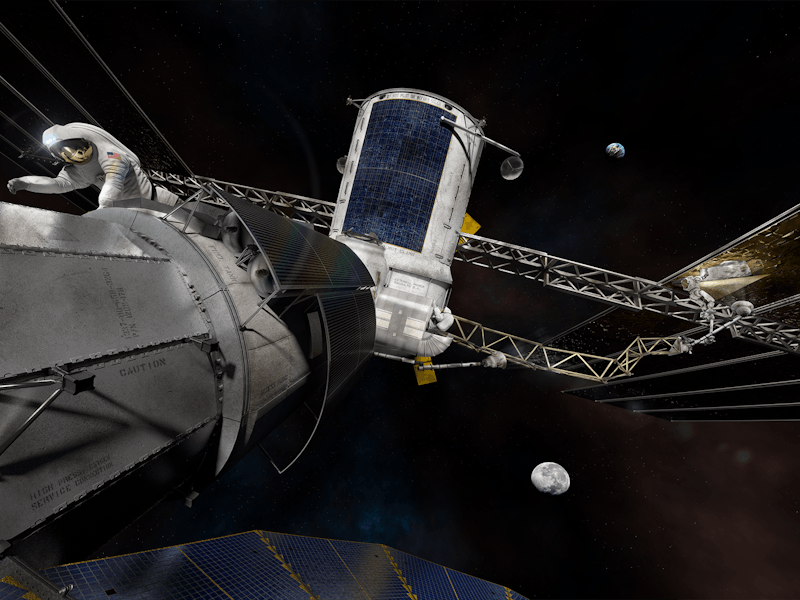6 Companies That Could Build Us Deep-Space Habitats
All part of the overall goal to get our asses to Mars.

On Tuesday, NASA announced it had finally selected six companies to build deep space habitat prototypes for ground testing as part of the overall effort to expand human space and habitation throughout cis-lunar space and advancing technologies that will be critical for sending astronauts to Mars by 2040.
The announcement comes just a few months after NASA put out a call for design proposals to the private spaceflight industry. The agency was likely spurred by instructions from Congress to provide a report within the first half of the year to explain how federal funds would be used to build and test a deep space habitation model. NASA has clearly missed that deadline, but it looks like it’s still shooting to have an operational prototype ready for ground testing by 2018.
The six selections are part of NASA’s Next Space Technologies for Exploration Partnerships-2 program, or NextSTEP-2, which is meant to forge public-private partnerships between NASA and commercial companies to advance future space exploration.
NASA’s “habitation strategy” is focused on two goals: allowing humans to survive up to 1,000 days in space inside a single module in order to make deep space travel and duration possible, and turning over low Earth orbit operations and development to the commercial industry. In commissioning these prototypes through NextSTEP-2, NASA wants to kill two birds with one stone.
Already, the agency has seen a successful delivery and installation of BEAM — Bigelow Aerospace’s expandable module — up on the International Space Station. The technology behind expandable structures like BEAM could be a cost-effective and easy way to launch space habitats and get them up and running in no time.
Bigelow is building a follow-up prototype as part of its selection for NextSTEP-2. As the only company on the list which has launched and is currently testing technology related to deep space habitation, it is already ahead of the game. In fact, Bigelow hopes to build and launch a 12,000 cubic foot habitat into space by 2020.
The company has some stiff competition in its way. Here are the six selected companies for NextSTEP-2, and the designs they’re working on right now.
Concept image of Boeing's prototype habitation module.
Boeing
This full-scale habitat design works off of the construction and on-orbit assembly of the ISS, for which Boeing has been heavily involved with during the entire 16-year operational station lifetime. You can perhaps think of it as the spiritual successor of the ISS.
Concept image of Lockheed Martin's refurbished multi-purpose logistics module prototype
Lockheed Martin
Lockheed Martin’s prototype is actually a refurbished multi-purpose module that is similar to the cargo hulls the space shuttles used to lug supplies to and from the ISS. The company is turning this design into a testbed for habitation technologies. If it ain’t broke, recycle it.
Concept image of Bigelow Aerospace's XBASE docked to the International Space Station.
Bigelow Aerospace
The company’s expandable XBASE (Expandable Bigelow Advanced Station Enhancement) design is the successor to BEAM. It’s the same size as the B-330 (330 cubic meters) expandable spacecraft design — but whereas that spacecraft is intended for low-Earth orbit commercialization, XBASE is focused on facilitating deep space habitation.
Concept image of Orbital ATK's cislunar habitat based, based on the design of the Cygnus spacecraft.
Orbital ATK
Orbital actually showed this design off a couple of months ago, saying they imagined it as a lunar orbit outpost tat could actually dock with NASA’s deep-space Orion crew capsule. This cislunar habitat concept is based off the Cygnus spacecraft currently used for some ISS resupply missions.
Concept image of Sierra Nevada Corporation's habitation prototype, based on its Dream Chaser cargo module.
Sierra Nevada Corporation
SNC essentially wants to build a version of its Dream Chaser spacecraft that can fly into deep space.
Concept image representing the feasibility study that NanoRacks will conduct related to converting a launch vehicle's upper stage into a habitable volume.
NanoRacks
A collaboration with Space Systems Loral and United Launch Alliance, this design will look to convert the upper stage of a typical launch system into a pressurized space habitat. This would be an incredible way to make the launch of deep space modules cheaper.